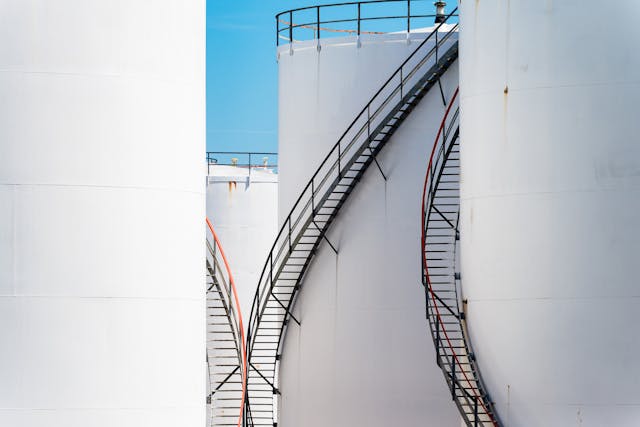
- admin
- February 28, 2024
Mastering Oil Storage Tank Construction: Your Comprehensive Guide
Oil storage tanks are essential components of the petroleum industry, providing a crucial link in the supply chain from production to distribution. Understanding the intricacies of oil storage tank construction is paramount for ensuring safety, compliance, and efficiency in the oil and gas sector. In this comprehensive guide, we’ll delve into the various aspects of oil storage tank construction, covering design considerations, materials, construction methods, and regulatory requirements.
- Design Considerations: Before embarking on oil storage tank construction, several key design considerations must be addressed. This includes determining the tank’s size, shape, and capacity based on factors such as storage volume requirements, site constraints, and environmental considerations. Additionally, factors such as corrosion resistance, seismic design, and accessibility for maintenance must be carefully evaluated during the design phase.
- Materials: Oil storage tanks are typically constructed from materials such as steel, fiberglass, and concrete. Each material offers unique advantages and considerations in terms of durability, cost, and compatibility with the stored product. Steel tanks are commonly used for their strength and versatility, while fiberglass tanks offer corrosion resistance and longevity. Concrete tanks are preferred for their fire resistance and suitability for large-scale storage facilities.
- Construction Methods: Oil storage tank construction involves several phases, including site preparation, foundation installation, tank erection, and final inspection. Site preparation involves clearing and leveling the area, followed by excavation for the tank foundation. The foundation is typically constructed from reinforced concrete to provide stability and support for the tank structure. Tank erection involves assembling the tank components on-site, including the shell, roof, and fittings, followed by welding and sealing to ensure structural integrity.
- Regulatory Requirements: Oil storage tank construction is subject to stringent regulatory requirements to ensure safety, environmental protection, and compliance with industry standards. Regulatory agencies such as the Environmental Protection Agency (EPA) and the American Petroleum Institute (API) set standards for tank design, construction, and maintenance. Compliance with regulations such as Spill Prevention, Control, and Countermeasure (SPCC) plans is essential for minimizing the risk of spills and environmental contamination.
Oil storage tank construction is a complex and highly regulated process that requires careful planning, expertise, and adherence to industry standards. By understanding the design considerations, materials, construction methods, and regulatory requirements involved, oil and gas companies can ensure the safe and efficient construction of oil storage tanks. With proper planning and execution, oil storage tanks can play a vital role in supporting the reliable and secure storage of petroleum products for years to come.
- Oil Storage Tank Construction
Category
- Above Ground Fuel Tanks
- Above Ground Gas Storage Tank
- Above Ground Storage Tanks
- Above Ground Water Storage Tanks
- Agricultural Tanks
- Chemical storage Tanks
- Diesel Fuel Storage Tanks
- Diesel Storage Tanks
- Exernal FloatingRoof Tanks
- Farm Water Tank
- Fiberglass Oil Tanks
- Fiberglass Septic Tanks
- Fiberglass Underground Fuel Storage Tanks
- Field Erected Tanks
- Floating Roof Tank
- Fuel tank
- Industrial Chemical Storage Tanks
- Industrial Gas Tanks
- Industrial Plastic Tanks
- Industrial Storage Tanks
- Industrial Tank heating pads
- industrial tanks
- Natural gas
- Natural gas vs Propane
- oil storage tank
- Oil Storage Tanks
- Peracitic Acid
- Petroleum Tanks
- Residential gasoline storage tanks
- Residential Water Storage Tanks
- Sodium Hydroxide Storage Requirements
- Sodium Hypochlorite Storage Tanks
- Steel Storage Tanks
- storage tank failure prevention
- Storage Tanks
- Sulfuric Acid Tanks
- Uncategorized
- UnderGround Storage Tanks
- Water Storage Tanks

 Tank Size Calculator
Tank Size Calculator






